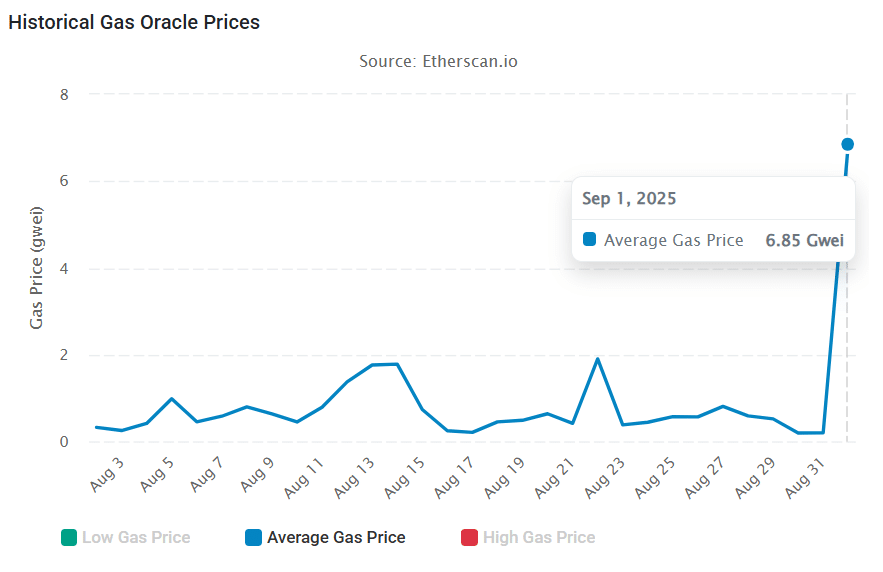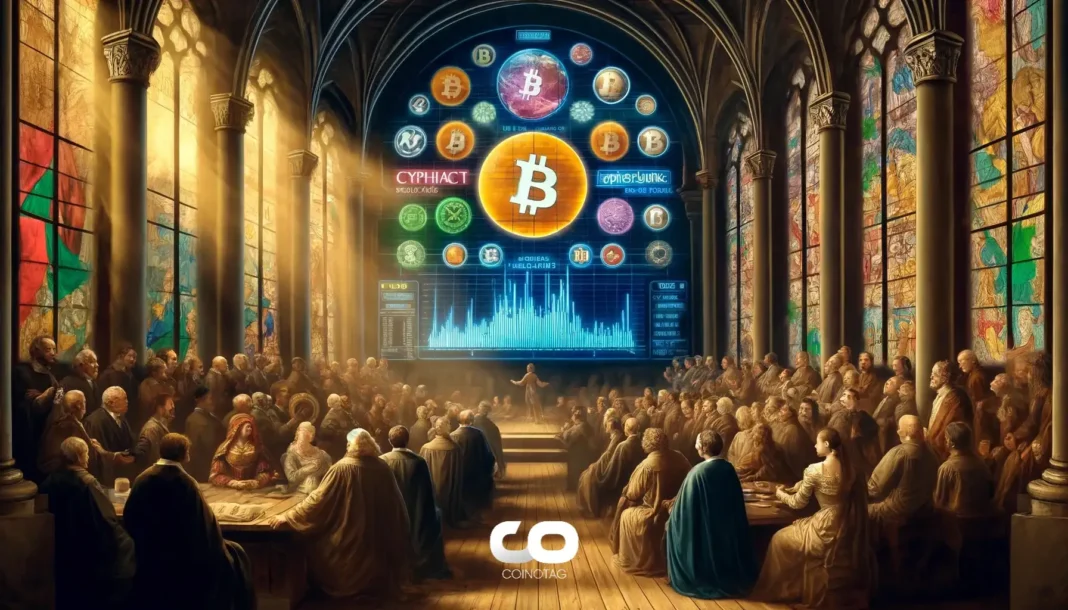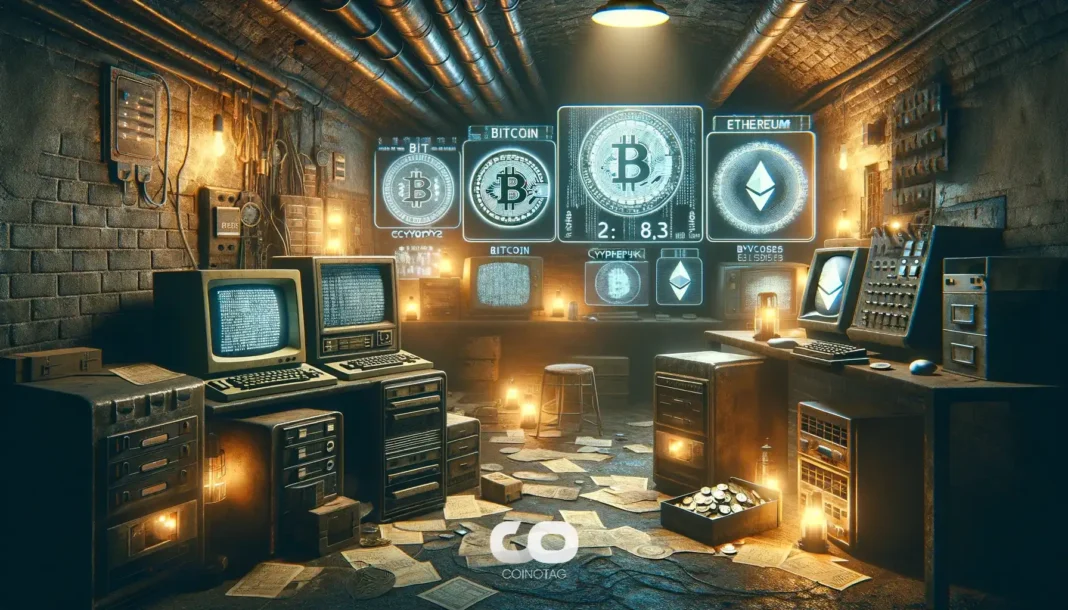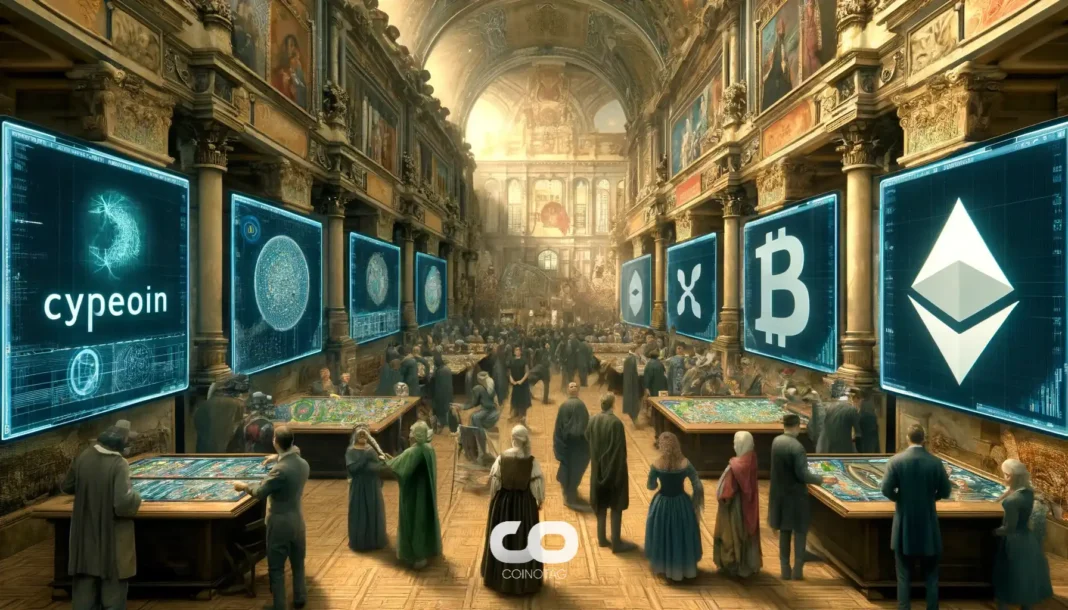| COINOTAG recommends • Exchange signup |
| 💹 Trade with pro tools |
| Fast execution, robust charts, clean risk controls. |
| 👉 Open account → |
| COINOTAG recommends • Exchange signup |
| 🚀 Smooth orders, clear control |
| Advanced order types and market depth in one view. |
| 👉 Create account → |
| COINOTAG recommends • Exchange signup |
| 📈 Clarity in volatile markets |
| Plan entries & exits, manage positions with discipline. |
| 👉 Sign up → |
| COINOTAG recommends • Exchange signup |
| ⚡ Speed, depth, reliability |
| Execute confidently when timing matters. |
| 👉 Open account → |
| COINOTAG recommends • Exchange signup |
| 🧭 A focused workflow for traders |
| Alerts, watchlists, and a repeatable process. |
| 👉 Get started → |
| COINOTAG recommends • Exchange signup |
| ✅ Data‑driven decisions |
| Focus on process—not noise. |
| 👉 Sign up → |
Ethereum gas fees spiked above 100 Gwei after the WLFI launch, forcing DEX swap costs to $145 and basic transfers past $10; the surge exposed Ethereum’s congestion risk versus Solana’s sub-cent fees, highlighting immediate scalability and cost trade-offs for traders and dApps.
-
Ethereum gas fees surged to 100+ Gwei during WLFI launch, driving transfers above $10.
-
Solana maintained ultra-low fees (~$0.004), narrowing DEX volume gaps with Ethereum.
-
DeFi metrics: Ethereum Daily Volume ≈ $3.823B; Solana trailed by ~5.5% per DeFiLlama data.
Meta description: Ethereum gas fees surged after WLFI launch, exposing congestion vs Solana’s low-cost edge — read the latest analysis and what traders should know.
| COINOTAG recommends • Professional traders group |
| 💎 Join a professional trading community |
| Work with senior traders, research‑backed setups, and risk‑first frameworks. |
| 👉 Join the group → |
| COINOTAG recommends • Professional traders group |
| 📊 Transparent performance, real process |
| Spot strategies with documented months of triple‑digit runs during strong trends; futures plans use defined R:R and sizing. |
| 👉 Get access → |
| COINOTAG recommends • Professional traders group |
| 🧭 Research → Plan → Execute |
| Daily levels, watchlists, and post‑trade reviews to build consistency. |
| 👉 Join now → |
| COINOTAG recommends • Professional traders group |
| 🛡️ Risk comes first |
| Sizing methods, invalidation rules, and R‑multiples baked into every plan. |
| 👉 Start today → |
| COINOTAG recommends • Professional traders group |
| 🧠 Learn the “why” behind each trade |
| Live breakdowns, playbooks, and framework‑first education. |
| 👉 Join the group → |
| COINOTAG recommends • Professional traders group |
| 🚀 Insider • APEX • INNER CIRCLE |
| Choose the depth you need—tools, coaching, and member rooms. |
| 👉 Explore tiers → |
What caused the Ethereum gas fees to spike after WLFI’s launch?
Ethereum gas fees spiked because the WLFI contract generated massive on-chain activity—about 1.58M daily transactions and 550k active wallets—pushing average Gas Price to ~6.85 Gwei before surging above 100 Gwei during peak congestion. This increased demand for block space sharply raised transaction costs.
| COINOTAG recommends • Exchange signup |
| 📈 Clear interface, precise orders |
| Sharp entries & exits with actionable alerts. |
| 👉 Create free account → |
| COINOTAG recommends • Exchange signup |
| 🧠 Smarter tools. Better decisions. |
| Depth analytics and risk features in one view. |
| 👉 Sign up → |
| COINOTAG recommends • Exchange signup |
| 🎯 Take control of entries & exits |
| Set alerts, define stops, execute consistently. |
| 👉 Open account → |
| COINOTAG recommends • Exchange signup |
| 🛠️ From idea to execution |
| Turn setups into plans with practical order types. |
| 👉 Join now → |
| COINOTAG recommends • Exchange signup |
| 📋 Trade your plan |
| Watchlists and routing that support focus. |
| 👉 Get started → |
| COINOTAG recommends • Exchange signup |
| 📊 Precision without the noise |
| Data‑first workflows for active traders. |
| 👉 Sign up → |


| COINOTAG recommends • Traders club |
| ⚡ Futures with discipline |
| Defined R:R, pre‑set invalidation, execution checklists. |
| 👉 Join the club → |
| COINOTAG recommends • Traders club |
| 🎯 Spot strategies that compound |
| Momentum & accumulation frameworks managed with clear risk. |
| 👉 Get access → |
| COINOTAG recommends • Traders club |
| 🏛️ APEX tier for serious traders |
| Deep dives, analyst Q&A, and accountability sprints. |
| 👉 Explore APEX → |
| COINOTAG recommends • Traders club |
| 📈 Real‑time market structure |
| Key levels, liquidity zones, and actionable context. |
| 👉 Join now → |
| COINOTAG recommends • Traders club |
| 🔔 Smart alerts, not noise |
| Context‑rich notifications tied to plans and risk—never hype. |
| 👉 Get access → |
| COINOTAG recommends • Traders club |
| 🤝 Peer review & coaching |
| Hands‑on feedback that sharpens execution and risk control. |
| 👉 Join the club → |
Source: Etherscan
How extensive was WLFI’s on-chain activity and its effect on fees?
WLFI recorded roughly 1.58 million daily transactions and over 550,000 active wallets in a 24-hour window. That volume created $1.8 billion in on-chain flows and concentrated state changes on Ethereum, leading to DEX swap fees peaking at $145 and simple transfers exceeding $10.
How does this compare to Solana’s cost and throughput?
Solana’s average transaction fee remained around $0.004 during the same period, showing orders-of-magnitude lower user costs. Per DeFiLlama metrics, Solana’s daily DEX volume trailed Ethereum’s $3.823 billion by approximately 5.5%, signaling that low fees can close volume gaps even when market leadership remains with ETH.

| COINOTAG recommends • Exchange signup |
| 📈 Clear control for futures |
| Sizing, stops, and scenario planning tools. |
| 👉 Open futures account → |
| COINOTAG recommends • Exchange signup |
| 🧩 Structure your futures trades |
| Define entries & exits with advanced orders. |
| 👉 Sign up → |
| COINOTAG recommends • Exchange signup |
| 🛡️ Control volatility |
| Automate alerts and manage positions with discipline. |
| 👉 Get started → |
| COINOTAG recommends • Exchange signup |
| ⚙️ Execution you can rely on |
| Fast routing and meaningful depth insights. |
| 👉 Create account → |
| COINOTAG recommends • Exchange signup |
| 📒 Plan. Execute. Review. |
| Frameworks for consistent decision‑making. |
| 👉 Join now → |
| COINOTAG recommends • Exchange signup |
| 🧩 Choose clarity over complexity |
| Actionable, pro‑grade tools—no fluff. |
| 👉 Open account → |

Source: DeFiLlama
| COINOTAG recommends • Members‑only research |
| 📌 Curated setups, clearly explained |
| Entry, invalidation, targets, and R:R defined before execution. |
| 👉 Get access → |
| COINOTAG recommends • Members‑only research |
| 🧠 Data‑led decision making |
| Technical + flow + context synthesized into actionable plans. |
| 👉 Join now → |
| COINOTAG recommends • Members‑only research |
| 🧱 Consistency over hype |
| Repeatable rules, realistic expectations, and a calmer mindset. |
| 👉 Get access → |
| COINOTAG recommends • Members‑only research |
| 🕒 Patience is an edge |
| Wait for confirmation and manage risk with checklists. |
| 👉 Join now → |
| COINOTAG recommends • Members‑only research |
| 💼 Professional mentorship |
| Guidance from seasoned traders and structured feedback loops. |
| 👉 Get access → |
| COINOTAG recommends • Members‑only research |
| 🧮 Track • Review • Improve |
| Documented PnL tracking and post‑mortems to accelerate learning. |
| 👉 Join now → |
Will Ethereum’s congestion change market dynamics?
Network congestion increases user friction and can redirect marginal flows to lower-cost chains. Ethereum maintains deep liquidity and developer activity, but repeated fee spikes during major launches can incentivize traders and some protocols to consider Solana or Layer-2 alternatives for cost-sensitive use-cases.
Fee and Volume Comparison
| Metric |
Ethereum (ETH) |
Solana (SOL) |
| Typical Fee (post-WLFI peak) |
$10+ (simple transfer peak), DEX swaps up to $145 |
$0.004 average fee |
| Daily DEX Volume |
$3.823 billion |
~$3.62 billion (≈5.5% lower) |
| Peak TXs (event) |
1.58M daily TXs (WLFI) |
Lower peak contention; higher throughput |
Frequently Asked Questions
How high did Ethereum gas fees go during WLFI?
Gas prices surged beyond 100 Gwei at peak congestion, causing average transaction costs to jump dramatically and DEX swaps to reach $145 in reported cases.
| COINOTAG recommends • Exchange signup |
| 🎯 Focus on process over noise |
| Plan trades, size positions, execute consistently. |
| 👉 Sign up → |
| COINOTAG recommends • Exchange signup |
| 🛠️ Simplify execution |
| Keep decisions clear with practical controls. |
| 👉 Get started → |
| COINOTAG recommends • Exchange signup |
| 📊 Make data your edge |
| Use depth and alerts to avoid guesswork. |
| 👉 Open account → |
| COINOTAG recommends • Exchange signup |
| 🧭 Be prepared, not reactive |
| Turn setups into rules before you trade. |
| 👉 Create account → |
| COINOTAG recommends • Exchange signup |
| ✍️ Plan first, then act |
| Entries, exits, and reviews that fit your routine. |
| 👉 Join now → |
| COINOTAG recommends • Exchange signup |
| 🧩 Consistency beats intensity |
| Small, repeatable steps win the long run. |
| 👉 Sign up → |
Can Solana fully replace Ethereum for DeFi volume?
Not immediately. Solana offers much lower fees and fast throughput, which can attract cost-sensitive flows, but Ethereum still leads in liquidity, developer ecosystem, and DeFi depth.
| COINOTAG recommends • Premium trading community |
| 🏛️ WAGMI CAPITAL — Premium Trading Community |
| Strategic insights, exclusive opportunities, professional support. |
| 👉 Join WAGMI CAPITAL → |
| COINOTAG recommends • Premium trading community |
| 💬 Inner Circle access |
| See members share real‑time PnL and execution notes in chat. |
| 👉 Apply for Inner Circle → |
| COINOTAG recommends • Premium trading community |
| 🧩 Turn theses into trades |
| Reusable templates for entries, risk, and review—end to end. |
| 👉 Join the club → |
| COINOTAG recommends • Premium trading community |
| 💡 Long‑term mindset |
| Patience and discipline over noise; a process that compounds. |
| 👉 Get started → |
| COINOTAG recommends • Premium trading community |
| 📚 Education + execution |
| Courses, playbooks, and live market walkthroughs—learn by doing. |
| 👉 Get access → |
| COINOTAG recommends • Premium trading community |
| 🔒 Members‑only research drops |
| Curated analyses and private briefings—quality over quantity. |
| 👉 Join WAGMI CAPITAL → |
Key Takeaways
- Gas spike exposed vulnerability: WLFI-driven activity pushed Ethereum fees above 100 Gwei, raising user costs sharply.
- Solana’s cost advantage: Solana maintained sub-cent fees, closing the DEX volume gap to within ~5.5%.
- Actionable items: Monitor gas metrics, use delay/batching, or route cost-sensitive flows to Layer-2s or low-fee chains.
Conclusion
Ethereum’s WLFI-driven congestion highlighted the network’s sensitivity during high-profile launches, with gas fees spiking to levels that materially changed user behavior. Solana’s low fees provided a clear transactional advantage. Traders and protocols should monitor gas conditions and consider Layer-2 or alternate-chain strategies when fees threaten economic activity. Published by COINOTAG — updated 2025-09-02.
| COINOTAG recommends • Exchange signup |
| 🧱 Execute with discipline |
| Watchlists, alerts, and flexible order control. |
| 👉 Sign up → |
| COINOTAG recommends • Exchange signup |
| 🧩 Keep your strategy simple |
| Clear rules and repeatable steps. |
| 👉 Open account → |
| COINOTAG recommends • Exchange signup |
| 🧠 Stay objective |
| Let data—not emotion—drive actions. |
| 👉 Get started → |
| COINOTAG recommends • Exchange signup |
| ⏱️ Trade when it makes sense |
| Your plan sets the timing—not the feed. |
| 👉 Join now → |
| COINOTAG recommends • Exchange signup |
| 🌿 A calm plan for busy markets |
| Set size and stops first, then execute. |
| 👉 Create account → |
| COINOTAG recommends • Exchange signup |
| 🧱 Your framework. Your rules. |
| Design entries/exits that fit your routine. |
| 👉 Sign up → |
| COINOTAG recommends • Members‑only research |
| 📌 Curated setups, clearly explained |
| Entry, invalidation, targets, and R:R defined before execution. |
| 👉 Get access → |
| COINOTAG recommends • Members‑only research |
| 🧠 Data‑led decision making |
| Technical + flow + context synthesized into actionable plans. |
| 👉 Join now → |
| COINOTAG recommends • Members‑only research |
| 🧱 Consistency over hype |
| Repeatable rules, realistic expectations, and a calmer mindset. |
| 👉 Get access → |
| COINOTAG recommends • Members‑only research |
| 🕒 Patience is an edge |
| Wait for confirmation and manage risk with checklists. |
| 👉 Join now → |
| COINOTAG recommends • Members‑only research |
| 💼 Professional mentorship |
| Guidance from seasoned traders and structured feedback loops. |
| 👉 Get access → |
| COINOTAG recommends • Members‑only research |
| 🧮 Track • Review • Improve |
| Documented PnL tracking and post‑mortems to accelerate learning. |
| 👉 Join now → |











